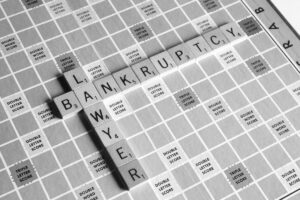
The whispers about record 2025 bankruptcies are louder, a consequence of a world economy with inflation, increasing interest rates, and persistent economic strain on individuals and businesses alike. While categorical individual bankruptcy data for 2025 are still being reached, aggregate economic statistics show that the majority of individuals and companies have growing debt burdens. This raises the serious question for those on the brink: Is bankruptcy the best choice for you in 2025? It is a complex choice with severe long-term ramifications. You need to do extensive research on both advantages and disadvantages.
The Current Financial Situation and Mounting Filings
Reports from around the globe report a steep rise in global bankruptcy filings in early 2025. Driving the trend are lingering effects of supply chain breakdown, cost of living increases, tight credit markets, and for the majority, reliance on credit to cover daily costs. These stresses are exerting a strain on people to the point of lending defaults and credit card statements. Although economic growth will be quicker, issues such as dismal job creation and low incomes continue, making the debt overhang for most. This, of course, makes more individuals view bankruptcy as a last resort for fiscal relief.
The Immediate Relief: Benefits of Bankruptcy
To those who are drowning in a sea of choking debt, bankruptcy is a lifeline. The principal benefit, governed by the Insolvency Act, 2015, is the ability to start over. Once a petition to become bankrupt has been made, an “automatic stay” comes into play. It literally puts most creditor activity on hold, including collection calls, wage garnishment, foreclosure, and repossessions. The temporary respite can be a godsend to those who are being mercilessly pestered by creditors.
Also, bankruptcy will discharge some types of unsecured debt, such as charge card debt, personal loans, and bills from the doctor. This essentially erases them, freeing the debtor from responsibility. While it will take a severe hit on your credit score in the short term, most are able to begin to rebuild their credit within a few years by following good financial responsibility after bankruptcy. To others, it is a well-thought-out choice that ultimately gives them greater economic security than being stuck incrippling debt.
The Long Shadow: Adverse Impacts and Consequences
Whereas there is the comfort of immediate shelter, bankruptcy has long-term negative impacts that must be very seriously weighed. A bankruptcy case stays on your credit record for some years. This significantly hurts your credit score, and it is difficult to get new loans, credit cards, or even a mortgage. Your creditors will view you as high risk, and if you are eligible for credit, it will be at extremely high interest rates.
Aside from credit, bankruptcy also costs you some of your belongings. Even though certain assets required are excluded under statute (e.g., personal effects and equipment of trade), non-excluded assets can be sold at sale by a trustee in bankruptcy to discharge the creditors’ claims. They can be land, motor vehicles, or investments. There is also a social stigma to bankruptcy that, although diminishing, can still influence business and social contacts. Besides, the process itself is likely to be complicated, time-consuming, and expensive in terms of lawyer fees.
Examining Alternatives Prior to Filing
Harsh as the penalties are, bankruptcy would ordinarily not be a last resort. Before resorting to this, one should explore other sources of debt relief. Some of these alternatives are:
Individual Voluntary Arrangement (IVA): An agreement between a creditor and debtor to repay in installments, but with reduced payments, without bankruptcy’s public stigma or total loss of assets.
No-Asset Procedure (NAP): For debtors with modest assets and some levels of debt this procedure offers the same cover as bankruptcy but without proclamation of formal bankruptcy.
Debt Consolidation: Combining debts into a single lower-interest loan may simplify repayment.
Debt Management Plans: Negotiation with creditors, usually through an agency of credit counseling, to create an official plan for repayment.
Negotiating Directly with Creditors: The creditors will in some cases take less or offer new terms in an attempt not to have to pursue bankruptcy. Seeking advice from a financial advisor or an authorized insolvency practitioner is the most important step towards evaluating your own financial situation and the best way forward.
Conclusion
The upsurge of 2025 bankruptcy filings is a reflection of the poor economic standing of most. As much as bankruptcy is a powerful weapon for debt discharge and financial fresh start, its serious consequences on credit and ownership of property need to be done very cautiously. For those with unaffordable debt, sound knowledge of the law, exploration of all alternative options, and even consultation with specialists need to be done before such a life-altering step.